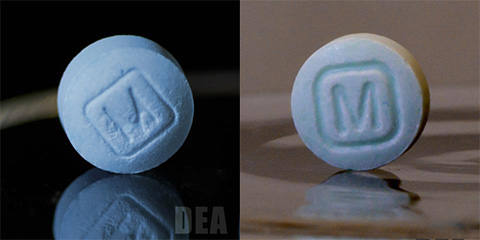Best-Practice Prescribing and Drug Diversion Training for West Virginia Nurses (1 Hour)
CONTACT HOURS: 1
Copyright © 2022 Wild Iris Medical Education, Inc. All Rights Reserved.
LEARNING OUTCOME AND OBJECTIVES: Upon completion of this continuing education course, you will be prepared to help prevent prescription drug misuse and diversion. Specific learning objectives to address potential knowledge gaps include:
- Discuss the scope of prescription drug misuse and diversion.
- Identify components of responsible prescribing practices for opioid medications.
- Discuss considerations for the use of the opioid antagonist naloxone.
TABLE OF CONTENTS
- Scope of the Problem
- Responsible Opioid Prescribing
- Prescribing and Administering Opioid Antagonists (Naloxone)
- Conclusion
- Resources
- References
SCOPE OF THE PROBLEM
The United States has been profoundly affected by the substance use epidemic that began in the 1990s. “Underprescribing” was a predominant issue at the time because of the physiologic and psychological effects caused by unrelieved pain. Concerns about undertreatment of pain despite the availability of effective drugs led to a movement toward more aggressive pain management, which then became a driving force behind more liberal opioid prescribing. Over time, this prescribing trend contributed to the drug epidemic the United States continues to face three decades later (U.S. DHHS, 2021).
The serious and deadly consequences of this epidemic prompted the medical community to reevaluate chronic pain treatment and prescribing practices, resulting in the CDC’s release of new evidence-based guidelines for prescribing opioids for chronic pain in 2016. Since that time, the prescription opioid-involved death rate has decreased, with figures showing a 7% drop from 2018 to 2019.
However, the crisis is far from resolved. Disturbing evidence points to a growing number of individuals beginning to misuse prescription drugs. The National Survey on Drug Use and Health estimates that in 2019:
- 9.7 million people ages 12 and older misused prescription pain relievers.
- 4.9 million misused prescription stimulants.
- 5.9 million misused prescription tranquilizers or sedatives.
- Each day, 2,600 new people ages 26 and older began to misuse a prescription pain reliever.
(SAMHSA, 2020)
Opioid addiction remains the driving force behind the prescription drug crisis in America. Alarmingly, a person is more likely to die today from an accidental opioid overdose than from a motor vehicle crash (NSDUH, 2020; NSC, 2019).
Substance use disorder has specifically impacted the health, well-being, and economy of West Virginia. In 2019, West Virginia had the highest age-adjusted drug overdose death rate in the nation (CDC, 2021a). And from March 2020 to March 2021, West Virginia experienced a 62.1% increase in counts of drug overdose-related deaths (CDC, 2021c).
One of the biggest challenges in healthcare practice is providing safe and appropriate pain care without contributing to this epidemic of prescription drug misuse, drug diversion, and drug overdose deaths. In West Virginia, SB 437 mandates that all healthcare providers who prescribe, dispense, or administer controlled substances receive specific education to help combat the problem of prescription drug abuse and diversion.
Nurses in particular are in a unique position to address this problem since they care for more patients than any other health profession. Nurses who understand the risks associated with prescription drug abuse will be better prepared to identify and intervene with patients and colleagues who may be at risk.
FENTANYL AND OVERDOSE DEATHS
Drug overdose deaths accelerated during the COVID-19 pandemic, outpacing overdose death rates from any previous year. Illicitly manufactured fentanyl, which is increasingly found in counterfeit prescription medications, was the main driver of the near 30% increase in overdose deaths from 2020 to 2021 (CDC, 2021d).
The U.S. Drug Enforcement Agency (DEA) reported in 2021 that criminal drug traffickers are mass-producing and falsely marketing counterfeit prescription drugs to exploit the opioid crisis and prescription drug misuse in the United States (DEA, 2021). Approximately 10 million counterfeit pills were seized across all states, which is more than in FY 2018 and 2019 combined. The number of DEA-seized pills containing fentanyl has jumped over 400% since 2019, corresponding to a drastic increase and the highest-recorded number of overdose deaths at more than 100,000.
Fake prescription pills are easily accessible and often sold on social media and e-commerce platforms, making them available to anyone. Many counterfeit pills are made to look like prescription opioids such as oxycodone (Oxycontin, Percocet), hydrocodone (Vicodin), and alprazolam (Xanax); or stimulants like amphetamines (Adderall); they typically contain fentanyl or methamphetamine.
The DEA warns that the only safe medications are those obtained from licensed and accredited medical professionals and that pills purchased anywhere other than a licensed pharmacy are dangerous and potentially lethal (DEA, 2021).

Left: Authentic oxycodone M30 tablet. Right: Counterfeit oxycodone M30 tablet containing fentanyl. (Source: DEA.)